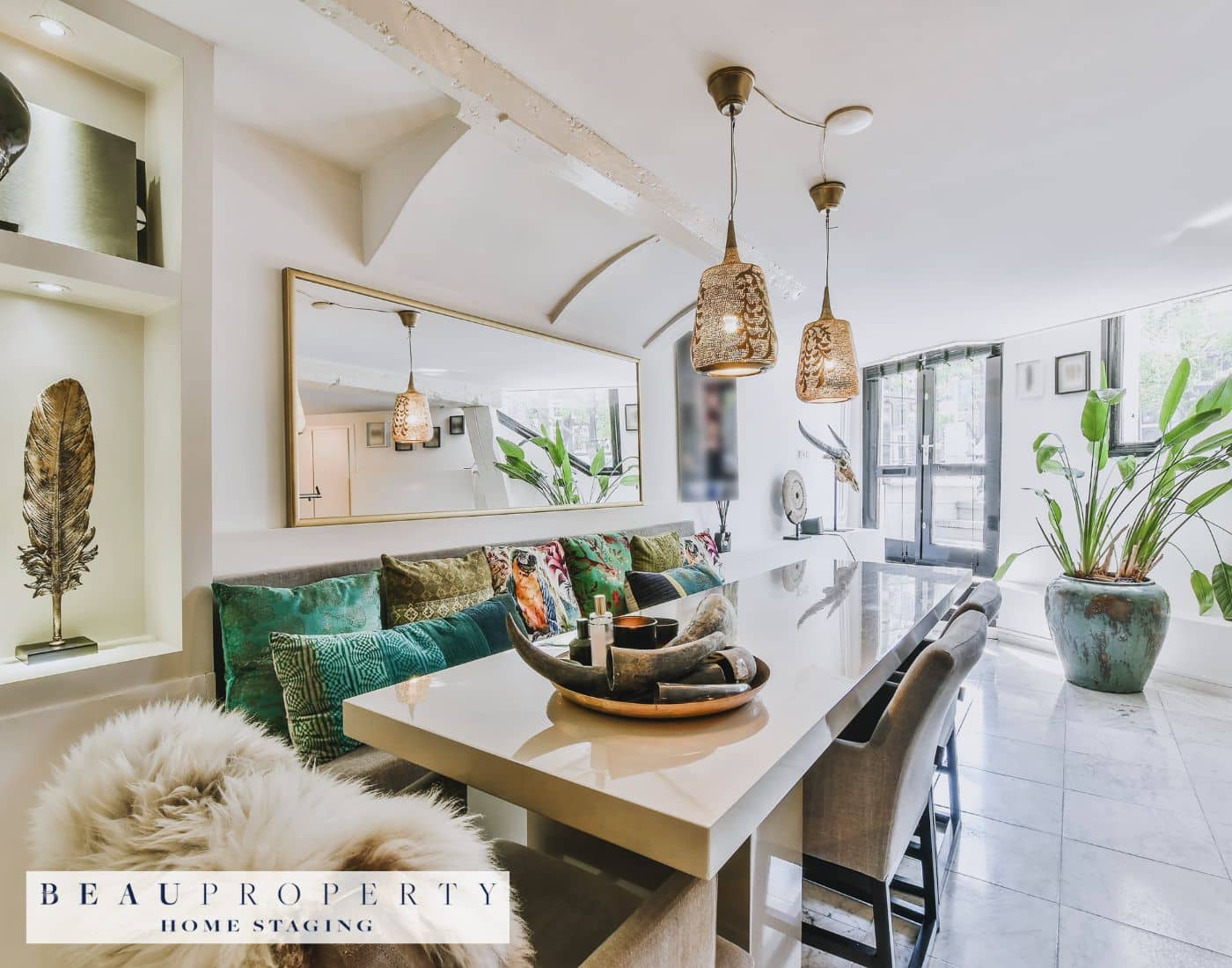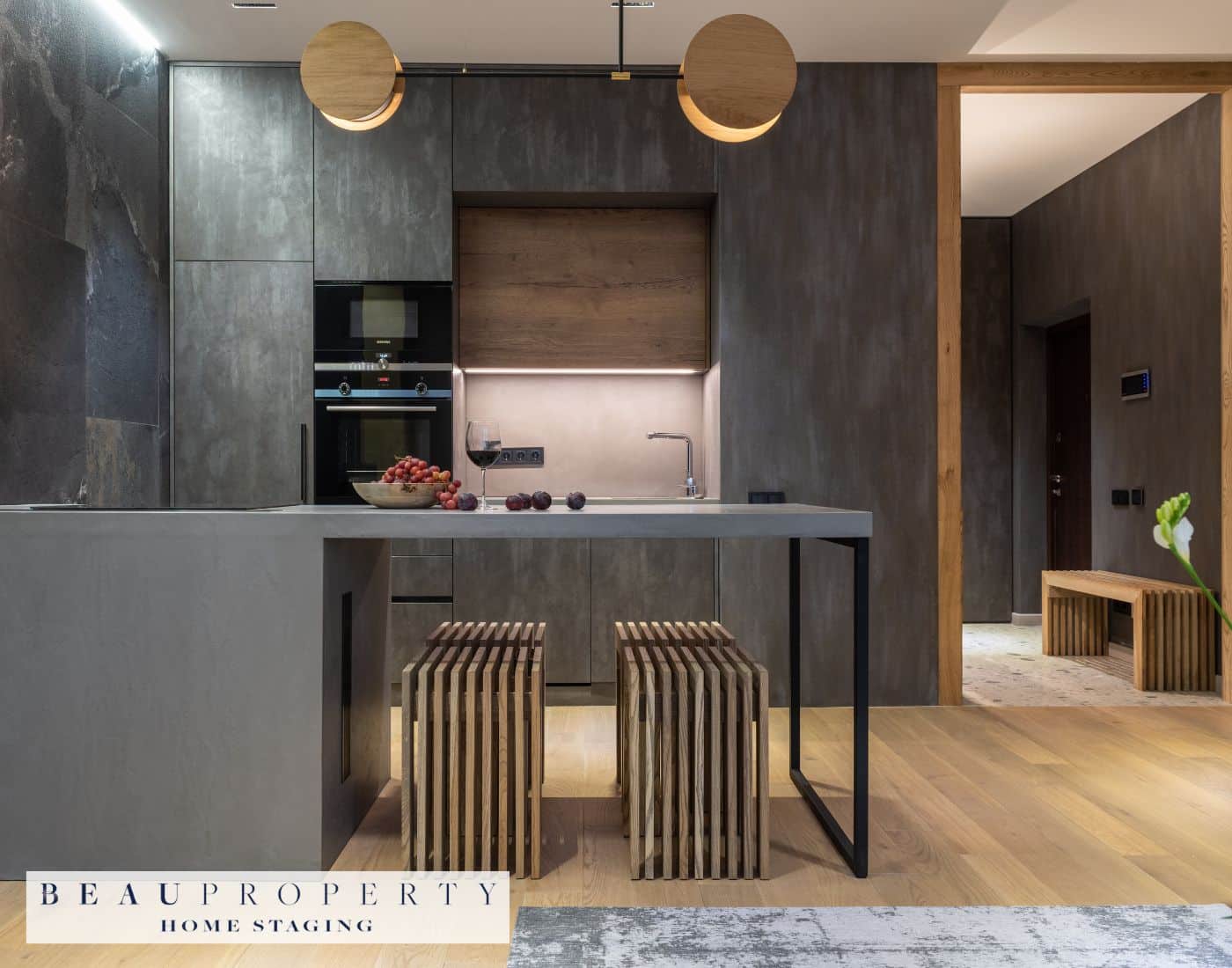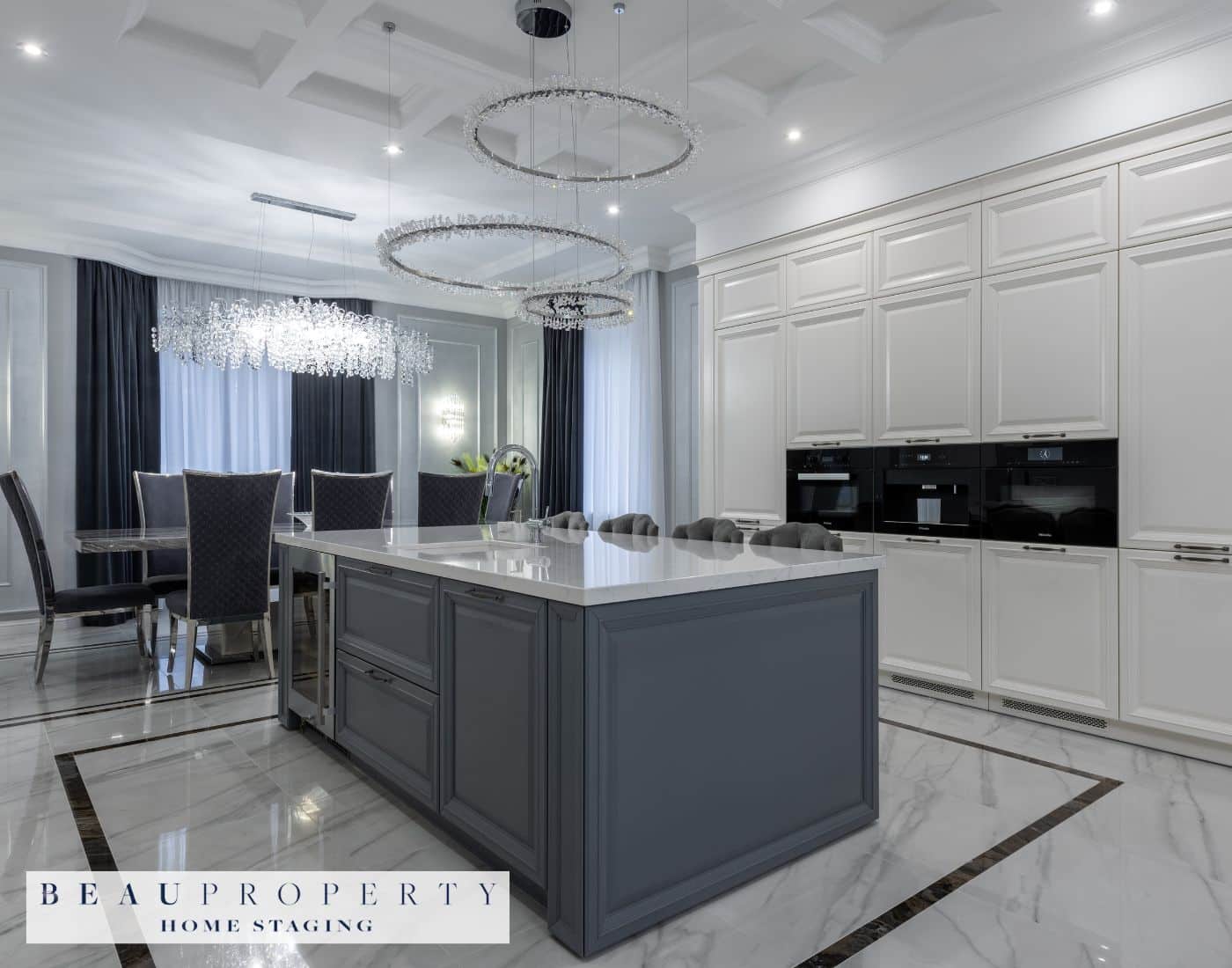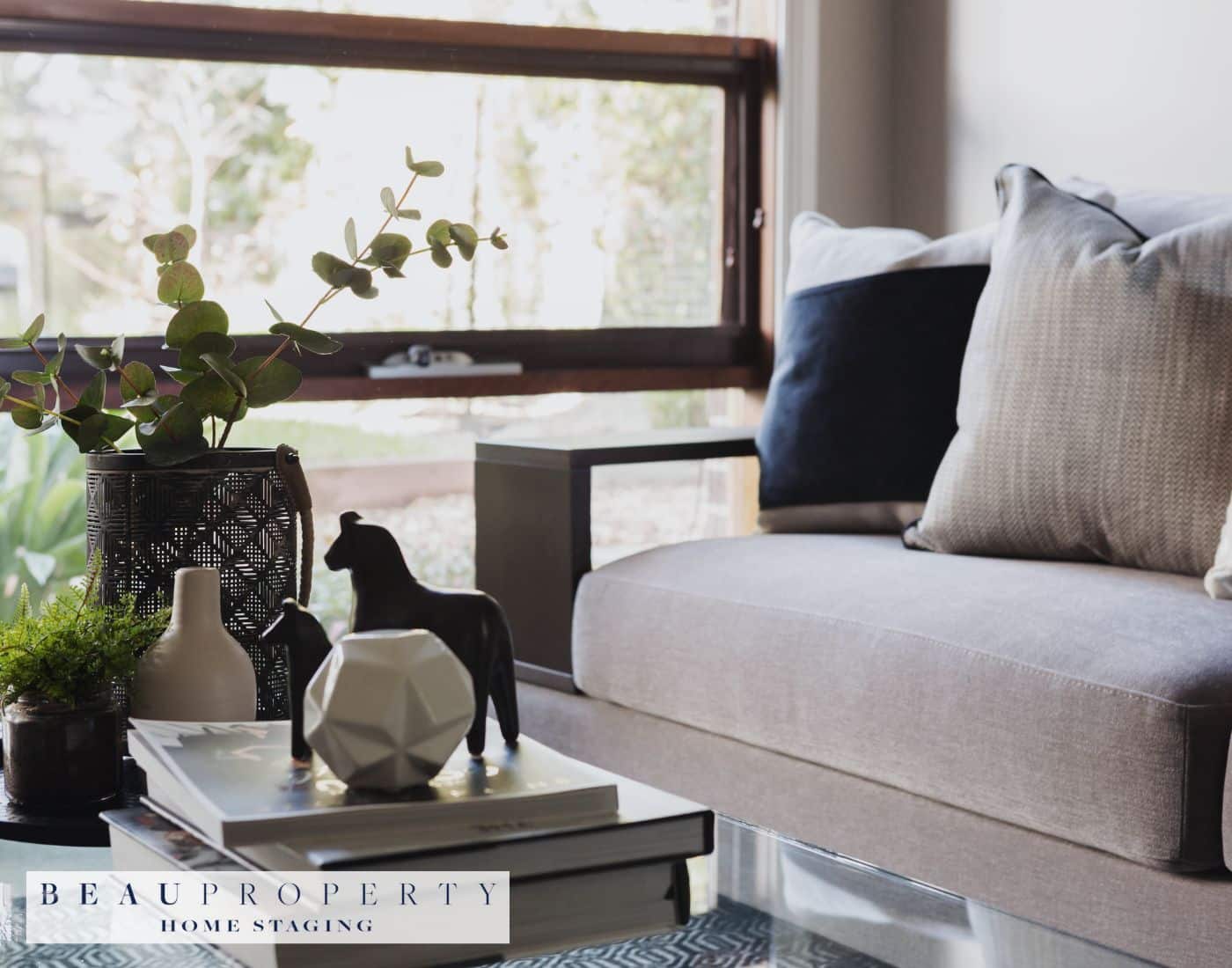Understanding the Basics
Defining Property Styling and Home Staging
Property styling and home staging are two key services that play a major role in the real estate market, but they serve distinct purposes. Property styling refers to enhancing a home with personal touches and aesthetic elements to reflect the homeowner’s personal style and living preferences. This often involves more permanent changes like painting walls, updating fixtures, and modernising flooring to create a unique, personalised living space.
On the other hand, home staging is a professional approach used primarily to prepare a home for sale by making it as appealing as possible to potential buyers. The goal is to create a neutral, attractive environment through temporary furnishings and décor that can help buyers visualise themselves living in the space. Staging often means depersonalising the home, removing personal photographs, and decluttering to appeal to the mass market.
Key Differences Between Styling and Staging Approaches
The fundamental difference between property styling and home staging lies in their objectives and longevity.
- Objective: Property styling focuses on personal taste and comfort, making a home a pleasing place to live. It reflects the lifestyle and preferences of the residents, incorporating their unique tastes and design sensibilities. Conversely, home staging aims to make the home universally appealing, ensuring it attracts a broad range of potential buyers. It’s about enhancing the property’s marketability with the intent to speed up the sale and maximise the sale price.
- Longevity: Styling often involves more permanent changes that require higher investment and time. These modifications are meant to improve the homeowner’s quality of life in the long-term. Staging, however, involves temporary changes and spatial arrangements that are typically reversed once the home is sold. The changes are quick to implement and relatively cost-effective compared to full-scale renovations.
By understanding these distinctions, homeowners and sellers can better decide which approach is suited for their needs, whether they are looking to enhance their living environment or optimise their property for a swift and profitable sale.
Why These Services Matter in Today’s Real Estate Market
Both property styling and home staging have become essential in today’s competitive real estate market. Amidst rising property prices and high buyer expectations, it is crucial to make a property stand out.
- Buyer Attraction: Home staging helps create an inviting atmosphere that appeals to a broad audience, potentially increasing the number of interested buyers. Staged homes often photograph better and are more likely to garner online interest, leading to more viewings and higher demand.
- Maximising Value: Professional staging can significantly impact the sale price. Data indicates that staged homes not only sell faster but often for higher than the asking price. Staged homes are able to highlight their best features in a way that uninfluenced spaces might not.
- Market Preparedness: Property styling can gradually increase a home’s value over time through strategic aesthetic enhancements. This can be crucial when homeowners eventually decide to sell, as a well-styled home is already a step ahead in the selling process.
The ability of both services to enhance visual appeal and livability underscores why integrating styling and staging into property sales strategies is becoming ever more indispensable. With the proper approach, sellers can achieve optimal market performance, ensuring their property appeals to potential buyers both emotionally and financially.
Property Styling Deep Dive
Focus on Personal Touches and Aesthetic Enhancement
When we think about making our homes truly our own, property styling shines as the ultimate method. Unlike home staging, which aims to broadly appeal to potential buyers, property styling is all about enhancing the space to reflect personal taste and preference. It’s like giving your home a custom-made suit, tailored perfectly to fit your lifestyle.
Adding personal touches can transform a house into a home that feels unique and inviting. This could be through displaying meaningful items like family photos or travel souvenirs, choosing bold artwork that speaks to you, or incorporating elements that hold sentimental value. Playful accessories and the right lighting can also make a significant impact, bringing both personality and warmth into the space.
More Permanent Changes Like Paint and Flooring
Property styling doesn’t shy away from more permanent changes. One of the key elements is the use of paint to transform the ambience of a room. Colour can drastically change how space feels – light shades can make a room appear larger and more airy, whereas dark hues can add a sense of coziness and depth.
Flooring is another area where property styling can make a strong, lasting impact. Replacing old carpets with wooden floors, or even painting existing floors for a fresh look, can update the entire feel of a home. Painting floors offers an abundance of colour options, enhancing the overall appearance and extending the life of the flooring.
Emphasis on Creating a Curated, Personalised Space
A well-styled property is cohesive and thoughtfully curated to match the homeowner’s personality and taste. This involves careful selection of furniture, decor, and art to create a harmonious environment. It’s not just about what looks good but also about what feels right for the person living there.
The importance of a personal touch cannot be overstated when it comes to interior design. Sometimes, something as simple as a piece of art or a unique piece of furniture can become the anchor for the entire room’s design. Plants are a wonderful addition that brings life and freshness to a space, while vintage finds can add character and charm.
Creating an aesthetic that resonates with the homeowner is central to property styling. An aesthetic house reflects personal taste and comfort, making it a true sanctuary. The goal is to make each space not just beautiful, but also a true reflection of the occupant’s style and preferences, ensuring every detail contributes to a warm, inviting atmosphere that feels uniquely theirs.
By focusing on these aspects of property styling, a home can be transformed into a personalised haven that reflects the individuality and tastes of its occupants. These more permanent changes are designed to make a space feel like home for the long term.
Home Staging Explained
Professional Approach Focused on Buyer Appeal
Home staging is a strategic marketing tool designed to help homeowners sell their properties faster and for a higher price. It involves decorating and arranging a home in a way that appeals to the broadest range of potential buyers. The primary aim is to create a neutral yet inviting atmosphere in which buyers can envision themselves. Effective staging can add thousands to a home’s resale value and expedite the selling process.
Depersonalisation and Mass Market Appeal Strategies
One of the key principles of home staging is depersonalisation. Removing personal items, such as family photos and unique decor, helps to neutralise the space. This is critical because buyers need to be able to picture the home as their own, rather than someone else’s. By creating a neutral canvas, staging eliminates distractions and allows buyers to focus on the space’s potential.
Mass market appeal is also crucial. Staging involves selecting furnishing and decor trends that resonate broadly with potential buyers. The aim is not to showcase high-end luxury but to present a warm, welcoming environment. Decluttering, fresh paint, and minor repairs fall under this approach, ensuring the home feels well-maintained and move-in ready.
Temporary Furnishing and Decoration Techniques
Home staging often employs rental furniture and accessories to achieve the desired look. This can include sofas, tables, artwork, and even plants. Professionals usually bring in these items temporarily to enhance the visual appeal of the property during showings and open houses. Properly staged homes highlight a property’s strengths while downplaying its weaknesses, making it appear more attractive to buyers.
Additionally, lighting plays a significant role. Adequate lighting can make spaces look larger and more welcoming. Using soft, warm light can create a cosy atmosphere, whereas bright, white light can make the home appear more modern and spacious. Small touches like fresh flowers or stylish table settings can also add a polished finish to the staging.
By implementing these strategies, homeowners can significantly enhance the appeal of their properties, ensuring they stand out in a competitive market. Staging is not just about making a house look pretty; it’s about creating an environment where buyers can see themselves living, ultimately speeding up the sale process.
Cost Considerations
When it comes to deciding between property styling and home staging, costs can vary significantly based on the specific needs and scale of the project. Understanding the investment involved, return on investment (ROI), and available budget-friendly options can help homeowners make informed decisions.
Investment Comparison: Styling vs Staging
Property styling often involves more permanent changes that reflect the homeowner’s personal style. This can include repainting walls, installing new flooring, or updating fixtures, making it a potentially more costly and invasive process. The overall investment in property styling not only covers these changes but also professional designer fees.
On the other hand, home staging is typically less invasive and more focused on temporary modifications. These include renting furniture, accessories, and artwork to create a neutral, appealing space that appeals to a broad range of buyers. The investment here covers consultation fees, rental costs, and sometimes storage or warehousing fees.
A breakdown of typical costs for home staging includes:
- Consultation: £150 to £600 per session
- Soft staging (accessories and decor rental): £50 to £500 a month
- Owner-occupied staging: £400 to £700 (one-time fee)
- Partial home staging (few rooms): £500 to £1,200 a month
- Full home staging (entire property): £1,200 to £3,000 a month
Return on Investment (ROI) Analysis
The ROI of home staging can be significant. According to a survey by the National Association of Realtors (NAR), nearly a third of agents stated that staging increased the dollar value offered by buyers compared to similar homes by 1% to 10%. Furthermore, about 75% of sellers saw an ROI of 5% to 15% over the asking price when they opted for professional staging.
While property styling does not provide immediate financial ROI in the context of selling, it contributes to longevity and personal satisfaction, potentially adding value through an enhanced living experience and even equity in the long run.
Budget-Friendly vs Professional Investment
For those on a budget, there are cost-effective ways to stage or style a home without breaking the bank. Here are some budget-friendly tips:
- Decluttering: Remove personal items, excess furniture, and clutter to create a spacious, neutral environment.
- Deep Cleaning: Ensure the home is spotless, focusing on kitchens, bathrooms, and high-traffic areas.
- Neutral Paint: A fresh coat of neutral-coloured paint can make a big difference without a huge expense.
- Lighting: Improve lighting by adding lamps or replacing outdated fixtures.
- Repurposing Furniture: Use existing furniture creatively to stage rooms effectively.
- Minor Upgrades: Small upgrades like new cabinet handles or fresh bedding can significantly enhance a room’s appeal.
Professional services, while more costly, ensure a high standard of finish and can often justify the higher price with potential faster sales and higher offers. Many homeowners find that even a modest staging investment pays off by reducing the time the property spends on the market and potentially avoiding price reductions.
Benefits and Results
Impact on Sale Price and Time on Market
When it comes to boosting the sale price and reducing time on the market, both property styling and home staging have proven to be effective tools. According to a variety of studies, professionally staged homes typically command higher sale prices and spend considerably less time on the market than their unstaged counterparts.
A survey conducted by the International Association of Home Staging Professionals (IAHSP) found that staged homes sell three to 30 times faster than non-staged homes. This rapid sale time is often attributed to the fact that staging focuses on presenting the property in its best light, making it more appealing to potential buyers during their initial viewing.
Furthermore, the National Association of REALTORS® (NAR) indicates that 20% of buyers’ agents reported that staging a home increased the dollar value offered between one and five percent, compared to similar homes that were not staged.
Buyer Perception and Visualisation Benefits
One of the most compelling benefits of home staging is its ability to help buyers visualise the property as their future home. The right staging can evoke emotions and foster a connection that ultimately drives purchasing decisions. NAR reported that 82% of buyer’s agents said that staging a home made it easier for their clients to visualise the property as their future home.
Moreover, effective staging can influence buyer perception by highlighting a property’s best features and creating a cohesive, considered space. For instance, updating décor with on-trend, inviting styles in key rooms like the living room and master bedroom can leave a lasting impression. This emotional connection can lead buyers to be more committed, less likely to back out, and in some cases, more willing to make higher offers.
Statistical Evidence of Effectiveness from Real Estate Studies
Numerous studies underscore the financial benefits that sellers can reap from investing in home staging. According to the Real Estate Staging Association (RESA), staging can result in an impressive return on investment. About 75% of sellers who invested in professional staging before listing their homes saw an ROI of 5% to 15% over the asking price.
Additionally, the financial advantages of staging extend beyond just the sale price. The National Association of REALTORS® noted that a significant majority of homes that are staged sell for 1% to 5% more than similar non-staged homes.
The quicker sale times and higher selling prices are not merely anecdotal. Data analysis and historical comparisons back these claims. For instance, staged homes tend to spend 73% less time on the market, translating into a faster, more profitable sale for homeowners.
With these compelling benefits and a tangible impact on both sale price and market time, it is clear that property styling and home staging offer substantial value to sellers. Whether aiming for a swift sale or a higher offer, these strategies make real estate transactions not only faster but more lucrative.
Choosing the Right Approach
Factors to Consider When Deciding Between Styling and Staging
Deciding whether to opt for property styling or home staging can be a significant decision for homeowners. Each approach serves different purposes and can have varied impacts based on individual property and market conditions. Here are a few key factors to consider when making this important choice:
Property Type and Market Considerations
- Type of Property:
- Residential Homes: For homes designed for families or individuals, home staging might be more suitable. Staging helps to present the property in its best light, attracting a wide array of potential buyers.
- High-End or Luxury Properties: Property styling can create a highly personalised and luxurious feel that appeals to high-end buyers. With the emphasis on unique aesthetics, styled homes can stand out in a competitive luxury market.
- Vacant Properties: Staging is generally more effective for vacant properties. It showcases the potential of every space and helps buyers visualise how rooms can be used, making the property feel more welcoming and complete.
- Market Trends:
- Buyer’s Market: When buyers have more options, staging can make a property more attractive than its competitors, potentially resulting in a faster sale.
- Seller’s Market: Even in a hot market, property styling can help command higher prices. A well-styled home can create a compelling first impression that may lead to multiple offers and top-dollar deals.
Timeline and Budget Alignment
- Timeline:
- Quick Sale Needed: If selling quickly is a priority, home staging is often the best choice. Staged homes typically sell faster, as they help potential buyers quickly see the property’s value and make quicker decisions.
- No Rush to Sell: If there is no immediate rush to sell, property styling can be a rewarding investment. It allows for personalisation and the enjoyment of living in a beautifully styled space while awaiting the right buyer.
- Budget:
- Limited Budget: Staging can be done on a smaller budget. Temporary furnishings and minor decor changes can have a significant impact without a substantial upfront cost.
- Larger Investment: Property styling typically requires a more considerable investment, especially if it involves structural changes like new flooring or paint. However, this can also add long-term value to the home, justifying the higher cost.
Decision-Making Process
To choose the right approach, it’s essential to weigh the specific characteristics of your property, understand current market dynamics, and align with your timeline and budget. Consulting with professionals in both fields might provide valuable insights tailored to your unique situation. Both property styling and staging have their merits, and understanding which aligns better with your goals will ensure that you maximise your home’s value and appeal effectively.
Implementation Tips
Best Practices for Both Styling and Staging
Declutter and Depersonalise
Clutter is your worst enemy when styling or staging a home. Clear out unnecessary items to create a sense of space. Depersonalising is also key, especially in home staging, to help potential buyers imagine themselves in the space. Remove personal photos, unique collectibles, and any highly personal items.
Clean Thoroughly
A clean home is inviting and appealing. Ensure every corner is spotless, from the kitchen to the bathrooms. Pay special attention to areas that may have been neglected over time, like baseboards and window sills.
Highlight Key Features
Whether styling or staging, it’s essential to showcase the best features of your property. It could be a fireplace, large windows, or hardwood floors. Make sure these features are easily visible and not hidden by furniture or decor.
Use Neutral Colours
Neutral colours appeal to most people and make spaces look larger and more cohesive. Stick to whites, beiges, and greys for walls and large furniture pieces.
Improve Lighting
Natural light is always a selling point. Replace heavy curtains with lighter ones and ensure windows are clean. Add lamps to brighten dark corners and replace any burnt-out bulbs.
Strategic Furniture Placement
Arrange furniture to create open, inviting spaces. Ensure there’s enough room to move around easily, and avoid pushing all furniture against the walls. Floating furniture setups often work better and define spaces more effectively.
Common Mistakes to Avoid
Over-Personalisation
Personal touches can work in styling but can deter buyers in home staging. Avoid too much personalisation in staging by removing personal photos, kids’ artwork, and any items that might not appeal to everyone.
Neglecting Repairs
Small repairs like fixing leaky faucets or patching holes in the walls can make a big difference. Neglecting these can give the impression that the home hasn’t been well-maintained.
Poor Furniture Placement
Avoid placing all furniture against the walls. Floating furniture setups often work better and help define spaces. Don’t overcrowd a room with too much furniture, which can make the space feel smaller.
Ignoring Curb Appeal
First impressions matter. Ensure the exterior of your home looks inviting with a well-maintained lawn, fresh paint on the front door, and cleaned pathways.
Too Much Decor
Less is more. Over-decorating can make spaces feel cluttered and overwhelming. Stick to a few key pieces to add interest without overdoing it.
Working with Professionals vs DIY Approaches
Hiring Professionals
Professional stagers and stylists have the experience and resources to showcase your home in the best possible light. They will know the latest trends, have access to a range of furniture and decor, and can usually work to a tight schedule. While it’s an upfront cost, the potential return on investment can make it worthwhile, often resulting in a higher sale price and faster sale.
DIY Approaches
For those on a tighter budget, DIY stages can be effective. You’ll save money by not hiring professionals, but be aware that it’s a significant time investment and may not yield the same results. It’s essential to research thoroughly and maybe get a few consultations from professionals to ensure you’re on the right track.
Whether you choose to work with professionals or go the DIY route, following these tips will help you create a more appealing, market-ready home. Making thoughtful decisions enhances not only the physical space but also its market appeal.









